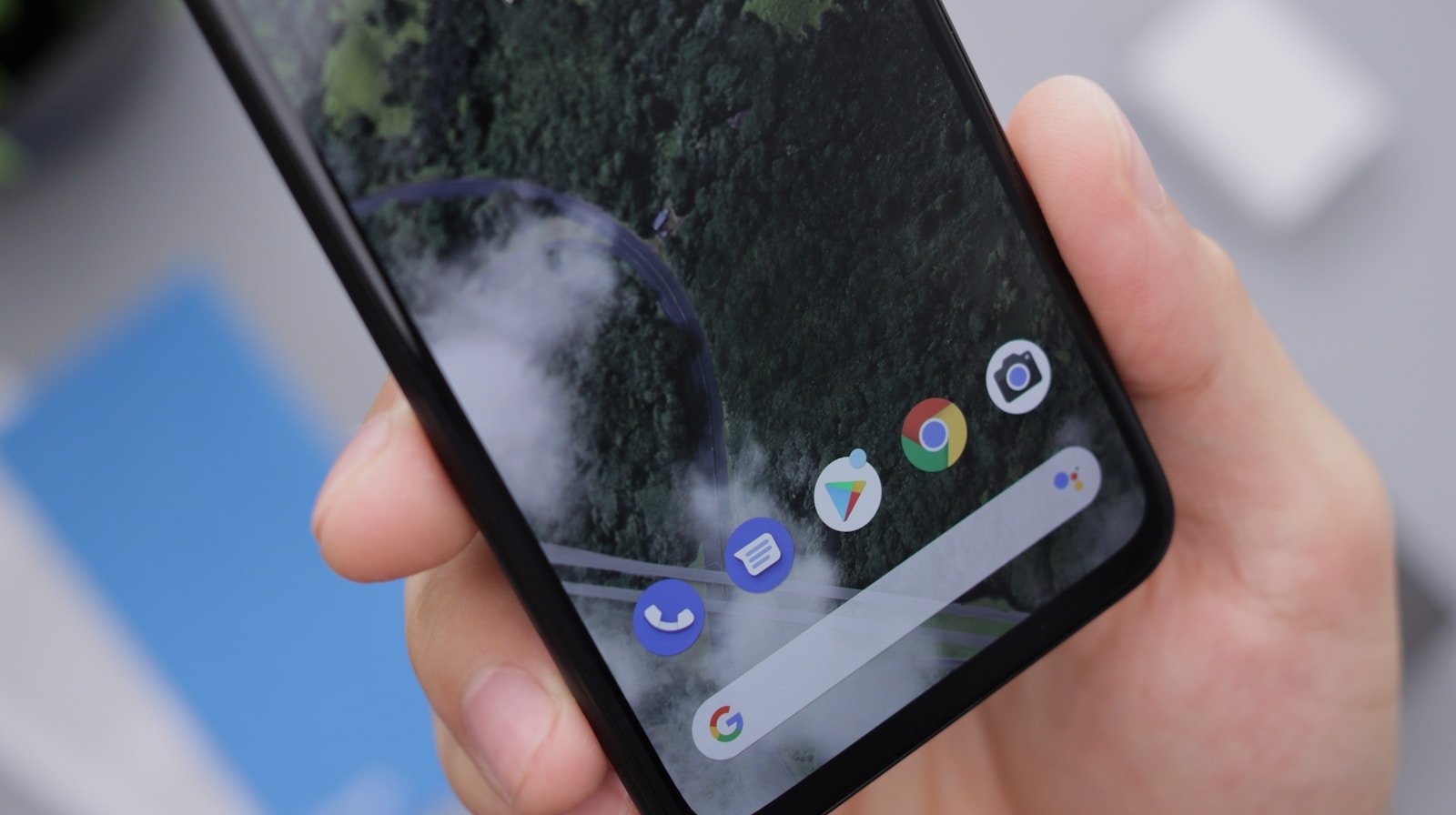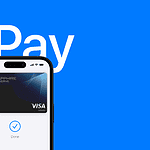Ever needed to hand your phone to someone but worried they might snoop around? App pinning on Android gives you control by locking your screen to just one app. This simple feature keeps others from accessing your personal information when they borrow your device. App pinning lets you lock a specific app on your screen, preventing anyone using your device from switching to other apps or seeing your notifications.
Setting up app pinning is easy and adds an extra layer of security to your phone. You can find this feature in your Android’s Security settings under Advanced options. Once enabled, you can pin any app before handing over your phone to friends, family, or even your kids. When you’re ready to unpin, a simple button combination returns full access to you.
App Pinning Guide for Android
App Pinning is a security feature on Android that locks a specific app on your screen so no one can exit it without unlocking your device. It’s incredibly useful for lending your phone to a friend, letting your kid use a single game, or sharing a screen in a kiosk setting.
Here’s how to use App Pinning on any modern Android phone in 2025, including Samsung, Pixel, and other brands running Android 12 and newer.
📲 What Is App Pinning?
App Pinning keeps one app “pinned” to the screen. When enabled:
- The user can’t open other apps.
- Home, back, and multitask buttons are disabled unless you unpin the app.
- It’s ideal for childproofing or public demo devices.
🔧 How to Enable App Pinning on Android
For Most Android Phones (Pixel, Motorola, OnePlus, etc.):
- Open Settings.
- Tap Security or Security & Privacy.
- Select More security settings or Advanced.
- Tap App Pinning or Screen Pinning.
- Toggle it ON.
- (Optional) Enable “Ask for unlock to unpin” to add extra security.
For Samsung Galaxy Phones:
- Open Settings.
- Go to Security and Privacy → Other security settings.
- Tap Pin Windows.
- Toggle it ON.
- (Optional) Enable “Require PIN/pattern to unpin”.
📌 How to Pin an App
- Open the app you want to pin.
- Tap the Recent Apps / Overview button (the square or swipe-up gesture).
- Tap the app icon at the top of the preview.
- Select “Pin this app” or “Pin”.
You’ll now be locked into that app.
🔓 How to Unpin an App
- For Gesture Navigation: Swipe up and hold from the bottom.
- For 3-button Navigation: Press and hold Back + Overview at the same time.
If you enabled security lock, you’ll be prompted to enter your PIN, pattern, or fingerprint to unpin the app.
🛡️ Tips & Use Cases
- For Kids: Pin a game or video app so they don’t accidentally open messages or delete anything.
- For Work: Keep your business app pinned during presentations or kiosk use.
- For Guests: Let someone use your phone to make a call or check directions without giving them access to your data.
❗ Troubleshooting
- If you can’t find App Pinning, your device manufacturer might have placed it under a different name like “Screen Pinning” or hidden it in advanced settings.
- Make sure your phone is running Android 9 or later (some manufacturers may have removed the feature in modified versions of Android).
App Pinning is a simple but powerful tool for privacy and control. Once set up, it only takes a few taps to secure your device and keep distractions or accidents at bay.
Key Takeaways
- App pinning locks your screen to a single app, protecting your private information when sharing your device with others.
- Enable this security feature through your Android Settings menu under Security or Security & Location options.
- You can quickly unpin an app using a simple button combination when you need to regain full access to your device.
Understanding App Pinning on Android
App pinning is a useful security feature on Android that lets users lock a specific app on the screen. This prevents others from accessing different apps or data on your device when you temporarily hand it over.
Defining App Pinning
App pinning is a security feature that locks a single app to your screen. When an app is pinned, it takes over your entire display, and users cannot access other apps or functions without unpinning it first.
This feature is perfect for when you need to let someone use your phone for a specific task. For example, if a friend wants to make a call, you can pin the phone app so they can’t look at your photos or messages.
App pinning works by limiting access to the device’s navigation system. The pinned app fills the screen, and attempts to leave will prompt for a password or PIN if you’ve set up this extra protection.
Evolution and Significance
App pinning first appeared in Android 5.0 (Lollipop) and has been improved in newer versions. It’s now easier to set up and use on Android 11 and later versions.
The feature has grown in importance as phones have become central to our lives. We store private data, banking information, and personal messages on our devices. App pinning provides a simple way to protect this information when sharing your phone.
Parents find app pinning especially valuable. They can lock a game or educational app for their children, preventing accidental purchases or access to inappropriate content.
Many businesses also use app pinning through mobile device management to create kiosk-style displays or for customer-facing devices.
How App Pinning Works
App pinning is a security feature that locks a single app on your screen, preventing access to other apps or device functions. This feature helps when sharing your phone with others or when you need to focus on just one task.
The Mechanism of Screen Pinning
App pinning takes over your entire home screen display, making only one app usable. While an app is pinned, users cannot access other apps, notifications, or system settings.
The feature works by limiting Android’s navigation system. When activated, the home button, back button, and recent apps buttons are disabled. This prevents anyone from switching to other apps or accessing the home screen.
To exit pin mode, users typically need to press and hold specific buttons together (often Back and Overview buttons). Some devices may require a PIN or pattern to unpin, adding an extra security layer.
This prevents whoever is using your device from switching to other apps, making it useful when lending your phone to someone who only needs to use one specific app.
Enabling App Pinning on Android Devices
Setting up app pinning requires a few steps in your Android security settings. Here’s how to activate it:
- Open the Settings app on your device
- Tap on Security or Security & Privacy
- Look for App pinning or Screen pinning option
- Toggle the switch to turn it on
For added security, enable the option that requires your lock screen PIN or pattern when unpinning. This makes the other apps on the device inaccessible unless someone knows your unlock code.
To use app pinning once enabled, open the app you want to pin, swipe up and hold (or tap the recent apps button), tap the app icon at the top, and select Pin. The exact steps may vary slightly between different Android versions.
When an app is pinned, you can lock the device and still allow only that specific app to be accessed when waking it up.
The Security Perspective
App pinning provides several layers of protection for Android users. It creates a more controlled environment when sharing your device and helps keep your personal information safe from prying eyes.
Protecting User Data
App pinning on Android is a powerful way to protect user data when someone else needs to use your phone. When an app is pinned, the user cannot access any other apps or personal information.
This feature is especially useful when:
- Lending your phone to a child
- Showing photos to friends
- Letting someone make a quick call
Without proper security measures, these simple actions could put private messages, photos, and passwords at risk. App pinning creates a safe boundary around the single app being used.
To protect sensitive information, users should enable the password or pattern requirement to exit pinned mode. This extra step ensures that only the device owner can return to normal phone use.
Preventing Unwanted Access to Other Apps
App pinning stops users from switching to other apps without entering the correct unlock credentials. This creates a significant security barrier against snooping.
When someone borrows a phone with app pinning enabled, they remain locked in the selected application. If they try to:
- Access the home screen
- Open recent apps
- Use navigation gestures
- Check notifications
The system will prompt for the device’s PIN, pattern, or password before allowing these actions. This security measure is valuable in various scenarios:
For businesses, it allows secure device sharing with customers or visitors. For parents, it provides control over which apps children can access. For everyone, it creates peace of mind when handing over a phone.
Setting up these restrictions takes only a minute but provides substantial protection against privacy invasions.
Certificate Pinning in Android Apps
Certificate pinning adds a crucial security layer to Android apps by verifying that connections are made only to trusted servers. This technique helps prevent man-in-the-middle attacks and certificate spoofing that could compromise sensitive user data.
Explaining Certificate Pinning
Certificate pinning is a security practice where an app only trusts specific certificates instead of any certificate signed by a trusted authority. In Android apps, this means the app contains a pre-defined set of valid certificates or public keys.
When the app connects to a server, it checks if the server’s certificate matches one of its pinned certificates. If there’s no match, the connection fails, even if the certificate seems valid otherwise.
Android developers can implement this feature in multiple ways. The three most common methods include:
- Network Security Configuration (XML-based approach)
- OkHttp library implementation
- Manual verification using TrustManager
Each method has its advantages depending on the app’s needs and structure. The Network Security Configuration option is often preferred for its simplicity.
Benefits of Certificate Pinning
Certificate pinning offers several important security benefits for Android apps. First, it prevents certificate spoofing attacks where hackers try to trick apps into connecting with fake servers using seemingly valid certificates.
This protection is especially valuable for apps that handle sensitive information like banking details, personal messages, or health data. Users gain extra protection against network-based attacks.
Another key benefit is protection against compromised Certificate Authorities. If a Certificate Authority is hacked, attackers could issue fake but “valid” certificates. With pinning, apps reject these certificates.
Certificate pinning also makes it harder for security testing tools to inspect app traffic, which, while sometimes challenging for developers, adds another layer of security. This creates a more secure connection over the SSL protocol.
The main trade-off is maintenance complexity, as certificate updates require app updates. Many developers think this extra work is worth the security gain.
Technical Aspects of Pinning
App pinning on Android involves several technical elements that work together to secure your device. These mechanisms protect both the app interface and the data transmitted through networks.
Certificate Pinning Implementation
Certificate pinning is a security technique that protects mobile apps from man-in-the-middle attacks. When an app connects to a server, it checks if the server’s certificate matches a pre-defined certificate stored in the app.
Developers implement certificate pinning by adding the server’s certificate or public key hash directly in the app code. This creates a trusted connection that’s hard to fake. In Android, this often happens in the network configuration file.
<network-security-config>
<domain-config>
<domain includeSubdomains="true">example.com</domain>
<pin-set>
<pin digest="SHA-256">base64EncodedPin</pin>
</pin-set>
</domain-config>
</network-security-config>
Most Android apps use libraries like OkHttp to handle certificate pinning. These libraries make it easier to set up strong security without writing complex code. Testing pinned connections is also important to ensure they work correctly.
Handling Public Keys in Pinning
Public key pinning focuses on the cryptographic keys rather than the entire certificate. This method is more flexible since certificates change more often than their underlying keys.
Developers can extract public keys from certificates using tools like OpenSSL. The extracted key is then hashed and stored in the app. When storing multiple keys, apps typically keep a primary key and backup keys.
Best practices for key management:
- Store hashes rather than actual keys
- Include backup keys to prevent app lockout
- Rotate keys periodically
- Use strong hash algorithms (SHA-256)
Android’s Network Security Configuration allows developers to set expiration dates for pins. This helps prevent apps from failing if certificates change. Most security experts recommend pinning to the intermediate CA certificate rather than the end-entity certificate.
Vulnerabilities and Certificate Hijacks
Despite its security benefits, pinning has potential weaknesses. If Compromised Certificate Authorities issue fake certificates, attackers might bypass normal security checks.
Hard-coded pins without proper updates can break apps when certificates expire. This leads to poor user experience and security risks. Certificate transparency logs help detect suspicious certificates, adding an extra layer of protection.
Common pinning mistakes include:
- Pinning only to leaf certificates without backups
- Forgetting to update pins before certificates expire
- Implementing pinning incorrectly in development vs. production
To reduce these risks, developers should plan for certificate changes and implement proper fallback mechanisms. Regular security testing can identify weaknesses in pinning implementations before attackers do.
Advanced Pinning Techniques
App pinning on Android goes beyond the basic screen lock functionality. These advanced techniques enhance security and provide more control for both users and developers working with sensitive information.
Maintenance of Certificate Information
SSL pinning is a critical security technique for Android apps that handle sensitive data. It works by storing trusted certificates within the app itself.
Developers need to keep certificate information up to date. When certificates expire, the app must be updated with new ones. This prevents potential security risks.
A Certificate Signing Request (CSR) is an important part of this process. The CSR contains the public key and app information needed to get a certificate from a trusted authority.
For multi-domain apps, SAN Certificates (Subject Alternative Name) are helpful. They allow a single certificate to secure multiple domains, making certificate management easier.
Strategies for Handling Pinning in Mobile Apps
Developers can implement pinning in different ways based on their app’s needs. The LPAuthenticationParams class offers a simple method to set up authentication with pinned certificates.
Best practices include:
- Storing backup certificates in case primary ones fail
- Using hash-based pinning rather than whole certificates
- Testing thoroughly before deployment
- Having a backup plan if pinning fails
The Vanity URL Feature helps create friendly, branded links while maintaining security through pinning. This keeps the user experience smooth while protecting data.
Regular updates to pinning configurations are essential. Developers should plan for certificate rotation and updates without breaking app functionality or security.
Best Practices for App Pinning
App pinning is a useful security feature on Android that locks users into a single app. When used correctly, it can protect your data and improve focus.
Enable App Pinning First
Before using this feature, you need to turn it on in your settings. Go to Security (or Security & Location), tap Advanced, and toggle “Use app pinning” to on.
Set a Strong Authentication Method
When configuring AuthenticationParams, always require a PIN, pattern, or biometric verification to exit pinned mode. This prevents unauthorized users from accessing other apps.
Consider these key scenarios for app pinning:
- Lending your phone to someone
- Showing presentations
- Using kiosk mode in business settings
- Helping children focus on educational apps
Internal Configuration Tips
- Test app pinning thoroughly before deployment
- Create clear documentation for users
- Review SDK compatibility with your target apps
- Implement regular security audits
The feature works best when users understand how to exit pinned mode. A quick reminder like “Press Back and Overview buttons together” helps prevent frustration.
For business settings, establish an SLA that includes support for users who might get stuck in pinned mode. This small step improves user experience significantly.
Remember that app pinning isn’t permanent. It’s meant for temporary use when sharing your device or focusing on one task.
Incorporating App Pinning into the On-Boarding Process
When companies set up new devices for employees, app pinning can be a valuable security feature to include from the start. This simple step helps protect company data and guides new users through initial device setup.
Training materials should clearly explain how to enable app pinning through the device settings. Companies often create short video tutorials showing the exact path to Security settings and the App Pinning toggle.
IT teams can prepare a checklist that includes:
- Setting up app pinning during initial device configuration
- Testing pins with common work apps
- Teaching users how to unpin when needed
- Including pin security in company policy documents
LivePerson and similar customer service platforms benefit greatly from app pinning. Support agents can focus on one customer at a time without accidentally switching apps during calls.
The AddCertificatePinningKey function adds another layer of security during the onboarding process. This technical step helps verify app connections and prevents certain types of network attacks.
Managers should track which employees have learned to use app pinning. A simple followup email or quiz can confirm understanding after the initial training.
Some companies include app pinning status in their monthly security reports. This helps track adoption rates across departments and identifies areas needing additional training.
For client-facing roles, app pinning prevents embarrassing screen-sharing accidents. Sales teams find this feature helpful during presentations when they need to stay in one app.
Frequently Asked Questions
App pinning offers Android users extra control over device sharing and security. Below are answers to common questions about setting up and using this handy feature.
How can I enable app pinning on my Android device?
To enable app pinning on most Android devices, open the Settings app. Then tap on Security or Security & location.
Look for Advanced settings and select App pinning. If you can’t find it right away, use the search function in Settings and type “pinning.”
Toggle the switch to turn on Use app pinning. This makes the feature available whenever you need it.
What is the process to unpin an app on Android?
Unpinning an app is simple. Press and hold both the Back and Recent buttons at the same time.
On newer Android versions with gesture navigation, swipe up from the bottom of the screen and hold.
The phone will exit pinned mode and return to normal use. If you set a PIN requirement, you’ll need to enter it first.
Is it possible to set a PIN for app pinning and how can I do so?
Yes, you can add PIN protection to make app pinning more secure. When enabling app pinning in Settings, look for the “Ask for PIN before unpinning” option.
Toggle this option on. Now whenever someone tries to unpin an app, they’ll need your device PIN or pattern.
This extra step prevents others from easily accessing other apps on your device when you’ve shared it.
How does screen pinning differ from app pinning on Android?
Screen pinning and app pinning are actually the same feature, just with different names. The official term is “screen pinning” but many people call it “app pinning.”
Both terms refer to locking your Android device to a single app. This prevents users from accessing other parts of your phone.
The feature works the same regardless of what it’s called in your device’s settings.
Are there any specific steps to pin an app to the home screen on Android?
Pinning an app to the home screen is different from app pinning. To add an app shortcut to your home screen, press and hold the app icon in your app drawer.
When the menu appears, select “Add to Home” or drag the icon to your home screen.
This creates a shortcut but doesn’t lock your device to that app like app pinning does.
What are the latest app pinning features introduced in Android 12?
Android 12 improved app pinning with better visual indicators showing when a screen is pinned. A small pin icon appears in the corner of the screen.
The unpinning gesture is more intuitive with the new gesture navigation system. Users swipe up and hold to exit pinned mode.
Android 12 also better integrates app pinning with other security features like biometric authentication for a smoother user experience.







